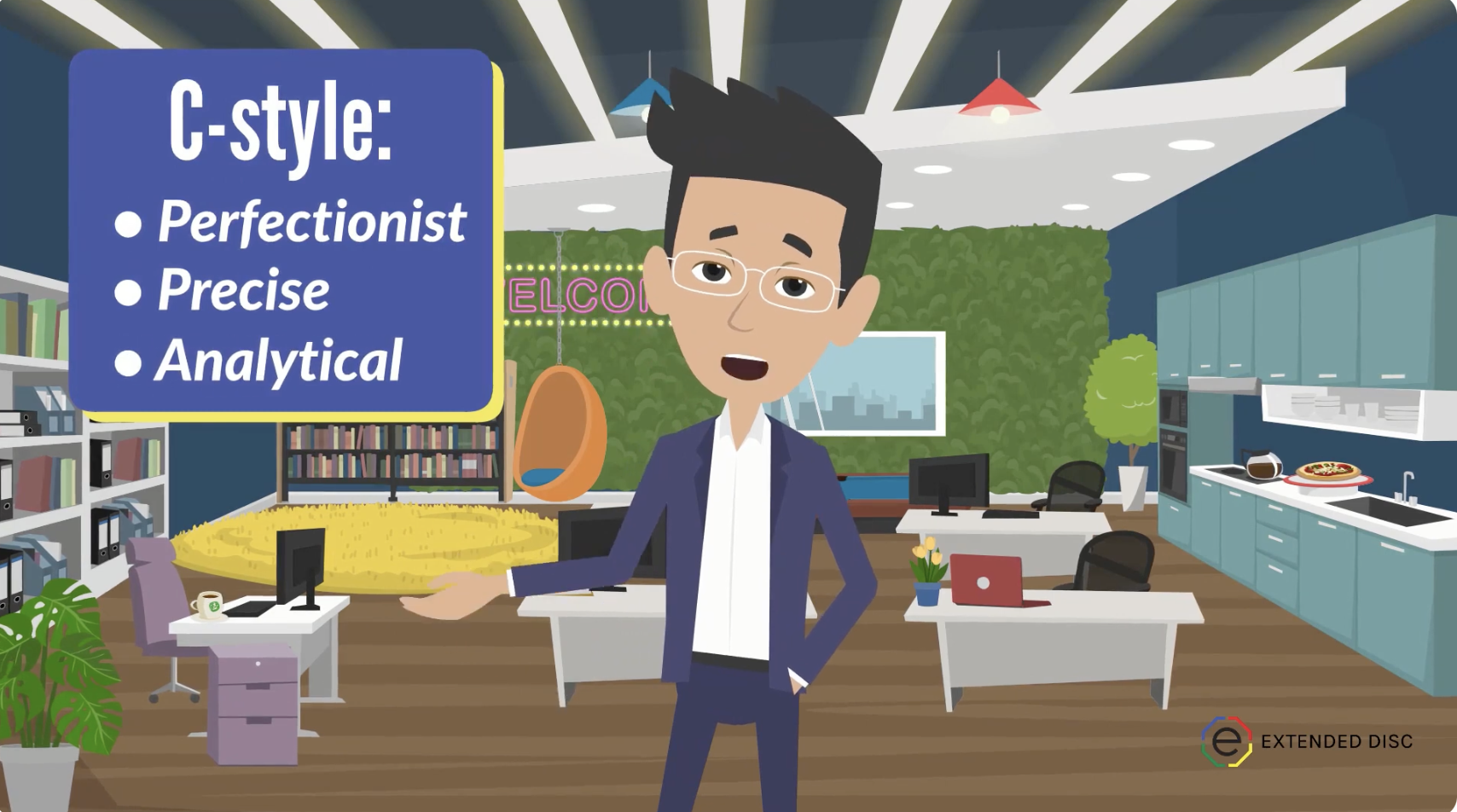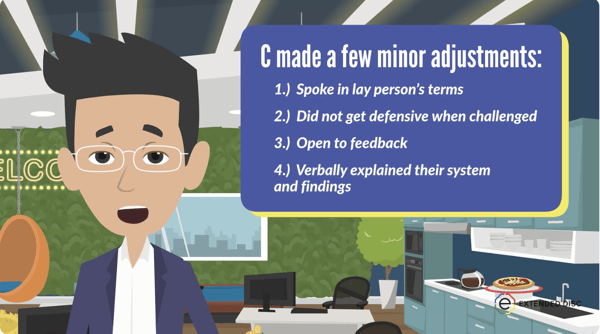Knowing when to leverage a C-style's strengths and when to adapt their approach are keys to continued success.
DISC styles
Teamwork is challenging, but recognizing and embracing different workplace styles improves communication and productivity. In addition, brief behavioral modifications further enhance interactions. The DISC tool supports how team members can interact more effectively using the four main behavioral styles: D-styles (dominance), I-styles (influence), S-styles (steadiness), and C-styles (conscientiousness). Each style has its unique strengths and challenges.
Let's delve deeper into the C-style to understand how we can work together more constructively.
C-styles overview
 The reserved C-styles are more precise and analytical. They prioritize high-quality work and strive for perfectionism. C-styles are most comfortable in environments where they can focus. They ask probing questions and analyze processes.
The reserved C-styles are more precise and analytical. They prioritize high-quality work and strive for perfectionism. C-styles are most comfortable in environments where they can focus. They ask probing questions and analyze processes.
However, they may struggle with shifting their focus from immediate tasks to the bigger picture. They may become defensive when their expertise is challenged. C-styles are not as comfortable with informal conversations. They prefer communicating through emails.
C-styles adjustments

So, how can C-styles modify their behavior to be more effective team members?
C-styles could practice using simpler language that is easily understandable for the layman and avoid providing excessive details in their communication. They could work on being more open when receiving constructive feedback. To enhance their team interactions, C-styles should make efforts to speak up and engage in informal communication.
C-styles will find motivation in leveraging their strengths while modifying to be more effective in building connections through interactions.
